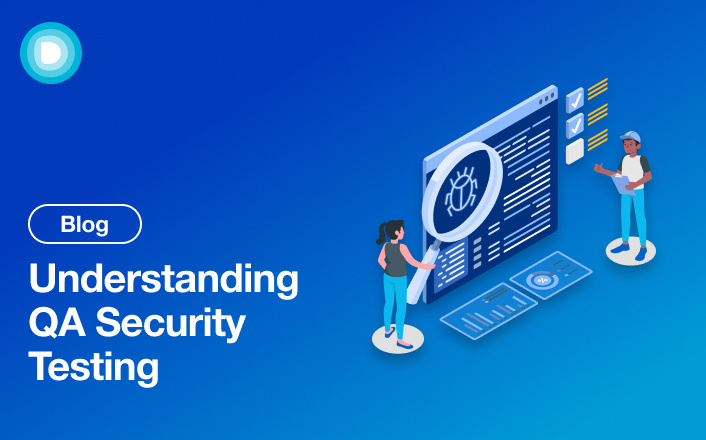- Product
-
Solution
-
By Industry
Cybersecurity solutions tailored to your industry’s needs.
-
- Resources
-
Books
Our ultimate guides and playbooks
Solution Briefs
Overview of PureDome’s functionality
-
Quizzes
Assess your cybersecurity readiness
Case Studies
PureDome customer success stories
Newsletter
Subscribe to the PureDome newsletter
-
- About Us
- Partner
- Pricing
- Download
Understanding QA Security Testing
-
Aiman Ikram
-
21 May 2024
- 3 min read


Ever wondered how safe your favorite apps and websites really are? That's where Quality Assurance (QA) in security testing comes into play. It's all about making sure that the software you use every day is as secure as possible. Let's dive into why it's so important and what you can do to keep your digital environment safe.
What is QA Security Testing?
QA Security Testing ensures software stays safe from hackers by checking for weaknesses. It involves testing security features to find loopholes that could be exploited. Techniques like penetration testing and code review are used to assess how resilient a software is.
By strict testing and implementing strong security measures, organizations protect sensitive information and maintain user trust. It's important for safeguarding digital assets from unauthorized access and data breaches. It ensures the integrity, confidentiality, and availability of systems.
Importance of QA in Security Testing
QA in Security Testing is crucial because it's like having a security guard for your digital world. It checks if your software is strong enough to keep hackers out. Without QA, hackers could sneak in and cause problems. With QA, we can find and fix any weaknesses before they become big issues.
Why Is QA Security Testing Important for Software Development?
It's important in software development because it keeps the final product safe. Without QA security testing, software could be easily hacked, leading to problems like data breaches and loss of trust. By testing for security issues, we can find and fix them early, making sure the software is safe to use.
5 Key Principles of QA Security Testing
-
Risk Assessment: Identify potential security threats and vulnerabilities in software.
-
Compliance: Ensure that security measures meet industry standards and regulations.
-
Integration: Integrate software security testing throughout the software development lifecycle.
-
Continuous Monitoring: Regularly check for new security risks and update defenses accordingly.
-
Collaboration: Foster teamwork between QA testers and security specialists to address security challenges effectively.
Best Practices for Implementing QA Security Testing
Establish Clear Security Requirements: Clearly define the security objectives and standards that the software must meet. This includes specifying encryption protocols, access controls, and data protection measures.
Training and Awareness Programs: Conduct regular training sessions to educate development teams about the latest security threats, attack vectors, and best practices for secure coding. Increase awareness of potential risks and the importance of security in all aspects of software development.
Zero Trust Network Access (ZTNA): Implement ZTNA solutions to ensure that access to resources is granted based on strict identity verification and authentication, regardless of the user's location or network. This helps prevent unauthorized access and lateral movement within the network.
.png?width=1728&height=836&name=Everything%20About%20Attacks%20on%20Web%20Applications%20(1).png)
Collaboration Between Teams: Foster a collaborative environment where QA testers, developers, and security specialists work together closely throughout the software development lifecycle. Encourage sharing of knowledge, insights, and expertise to identify and address security vulnerabilities early in the development process.
Regular Security Updates: Establish a process for continuous monitoring of the software's security posture and promptly apply patches and updates to address newly discovered vulnerabilities. This includes staying informed about security advisories and maintaining an inventory of software components to ensure timely updates.
Case Studies and Examples
-
Zoom Security Enhancements: Zoom improved security after concerns arose during the pandemic. They added encryption, better password controls, and extra login security. These changes showed Zoom's commitment to user privacy and security.
-
SolarWinds Supply Chain Attack: Hackers targeted SolarWinds a few years ago, showing the need for strict software security testing. They entered the company system and spread harmful updates to many organizations.
-
Colonial Pipeline Ransomware Attack: In 2021, a cyberattack on Colonial Pipeline disrupted fuel supplies. This attack exposed flaws in their IT security, leading to a shutdown and big losses. It highlighted the need for strong security measures and quick response plans.
Future Trends in QA Security Testing
AI and Machine Learning Integration: Expect to see more AI-driven tools for automating security testing processes, detecting anomalies, and predicting potential threats based on patterns and historical data.
DevSecOps Adoption: As organizations embrace DevSecOps practices, security testing will become more tightly integrated into the software development lifecycle, ensuring that security considerations are addressed from the earliest stages of development.
Zero Trust Architecture (ZTA): ZTA will gain prominence as organizations shift towards a model where no entity, whether inside or outside the network, is trusted by default. This approach will lead to more robust security testing methodologies focusing on continuous verification and access controls.
IoT Security Testing: With the proliferation of Internet of Things (IoT) devices, there will be an increased focus on software security testing for connected devices and ecosystems. This includes testing for vulnerabilities in device firmware, communication protocols, and cloud-based services.
.png?width=1728&height=836&name=Everything%20About%20Attacks%20on%20Web%20Applications2%20(1).png)
How PureDome Helps
PureDome helps organizations stay safe online. They offer special tools and know-how for software security testing. By using PureDome, businesses can find and fix security problems effectively. Whether it's scanning for vulnerabilities or doing security audits, PureDome makes sure digital assets are protected. This builds trust with customers and keeps businesses safe from cyber threats.
Frequently Asked Questions
What is QA Security Testing?
QA Security Testing checks software for weaknesses to keep it safe from hackers.
Why is QA Security Testing Important for Software Development?
It's crucial for keeping software safe from cyber threats and maintaining user trust.
How Does PureDome Help Organizations?
PureDome provides specialized tools and expertise for testing security and protecting digital assets.